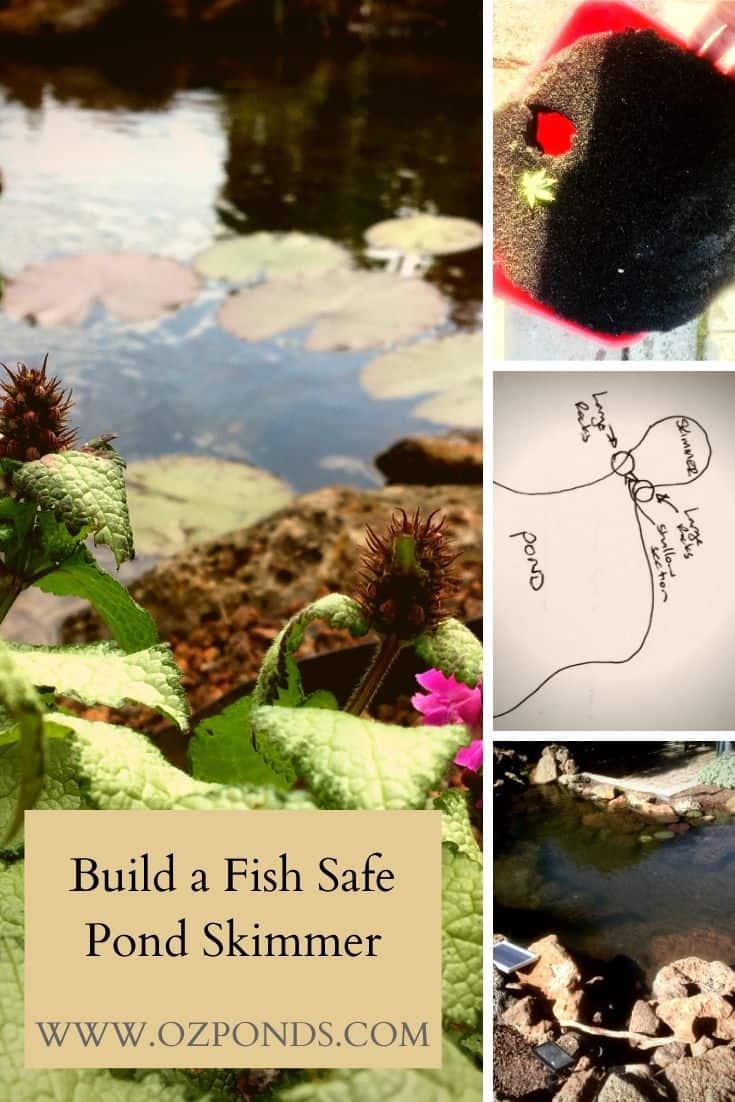Preventing fish from entering your pond skimmer can be a loosing battle.
Many species of fish originate from river environments.
So they are quite happy when the find the current ripping into your skimmer box.
They investigate, then BAM! they get sucked in!
I was pretty excited when I brought my first pond skimmer. I set it up and it pulled all the surface materials into it perfectly.
Problem was, I kept finding my comets and shubunkins in there.
I’d pull them out, think “well they learnt their lesson”.
Nope an hour later there they were again!
Grrr!
The only solution was to remove the weir door.
This works!
They can swim into the skimmer box but more importantly now they can swim out.
Only problem is the skimmer isn’t as effective as it was previously.
The water is still being pulled over towards the skimmer but there isn’t as much surface tension.
So not as much of the debris is making it to the skimmer.
Now I prefer to build my own skimmer system. It’s cheaper, safer and less maintenance.
Building a cheap fish safe skimmer
To build a homemade fish safe skimmer you will need:
- A bucket or other container large enough to house your pond pump or pumps.
- Some course filter sponge.
- A few large rocks.
- Pebbles.
- Some small off-cuts of pond liner or waterfall foam.
The skimmers I make sit within the pond so no need to cut or make a hole in the liner.
To make the skimmer we need to create a shallow, narrow zone.
This can be done during the excavation on a new pond.
If adding to an existing pond you can use the pond liner off-cuts or waterfall foam, along with some large rocks.
You need the liner or foam to seal the gaps in the rocks. Without it water will just move through the gaps and lessen the pull of the current we are trying to create.
The width of the gap is a little trail and error as it will depend on the flow of the pump.
We want to create a good pulling current, but we also want the water depth large enough for our fish to swim in and out.
As a guide up want to see ripples as the water rushes through the narrow, shallow gap.
I’ve tried to draw some rough sketches to show that I’m talking about.
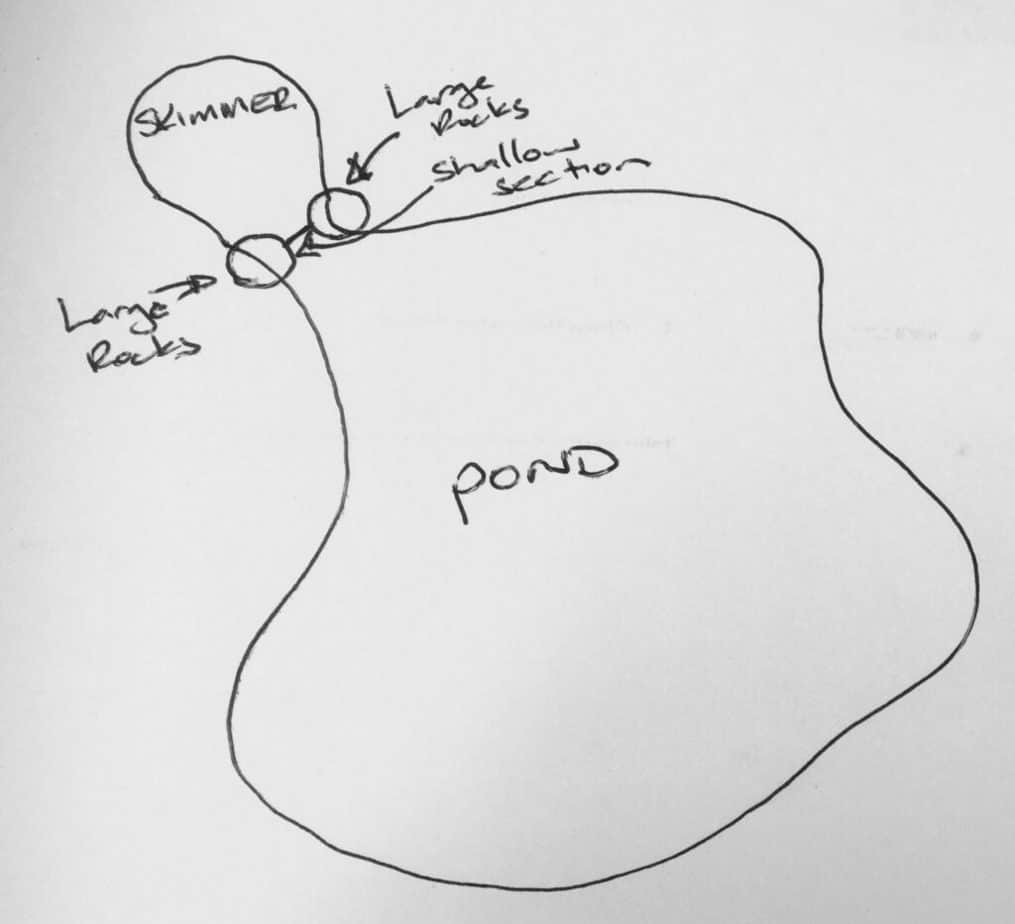
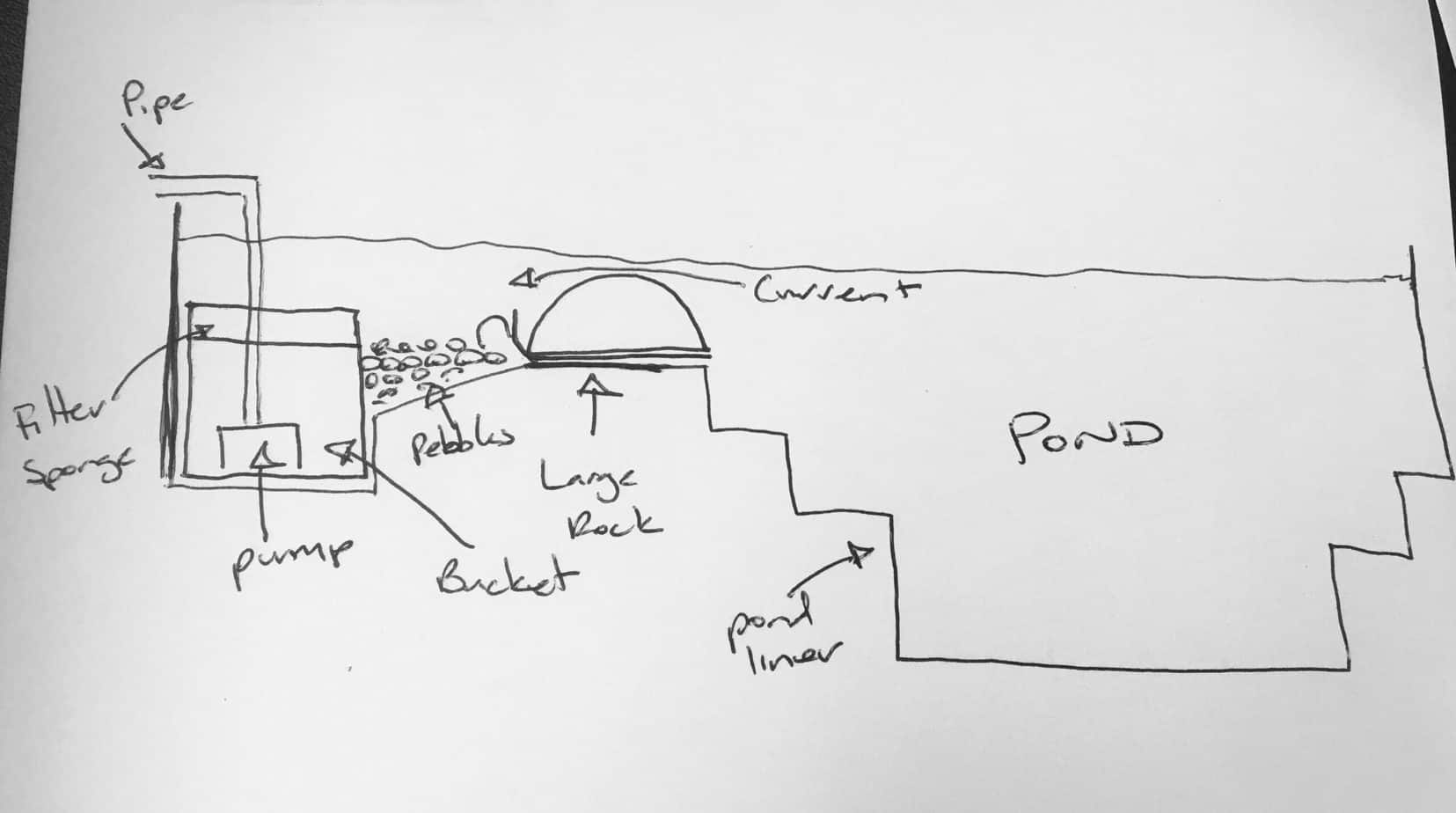
The bucket or container sits within this little cove.
The cove needs to be deep enough so that the bucket or container can be fully submerged.
Yet keep it shallow enough that it’s still easy to access the pump.
Using the course filter sponge cut out the shape of the bucket or container opening. Get it as tight as you can.
This is going to stop any small fish fry getting sucked into the pump.
Cut out a hole for the pipe and pump lead to fit through.
Use rocks and pebbles to make the skimmer “cove” look natural.
It can take a little tweaking to get the current just right.
But thats easy enough by just adjusting the width of the cove opening.
Most skimmers are quite expensive. This homemade skimmer only costs a few bucks.
Maintenance
To maintain the skimmer you just net out all the floating debris.
The constant current creates a sort of vortex. All the debris will be floating around in a circular motion within the cove.
Most of the small sediments will get trapped in the filter sponge.
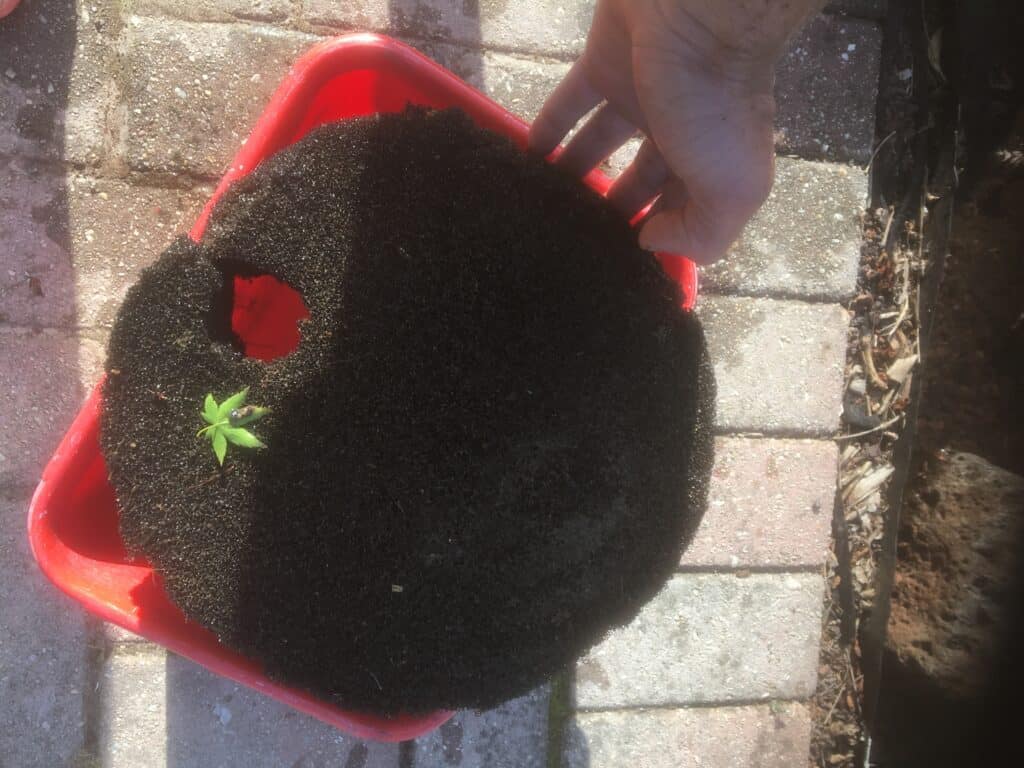
To rinse the sponge, fill a container with pond water and squeeze it out.
You want to use and water as the sponge has good bacteria living on it, if you use tap water you’ll kill them.
How often you need to do this will vary.
Obviously during autumn there will be plenty of leaves entering the pond.
If you want to lessen the frequency of maintenance make the skimming cove larger. This allows much more debris to accumulate before it needs to be removed.
Where should you place the skimmer?
A pond skimmer should always be placed at the opposite side of the pond to where the water enters the pond.
This is so the water is pulled from one end and pushed to the other.
You should also consider the direction the wind most commonly blows.
Leaves are the main item we are trying to collect so if we can utilise the wind to push them over towards the skimmer, all the better.
On large ponds it may be necessary to add some jets. These can be positioned in areas where the debris gets stuck in a no mans land.
You still want to run these off the pump or pumps located in the skimming cove.
If you locate pumps in different areas you will confuse the flow of water.
Best to have everything pulling from the one location. You can push from multiple locations however.
I hope that makes sense 😉
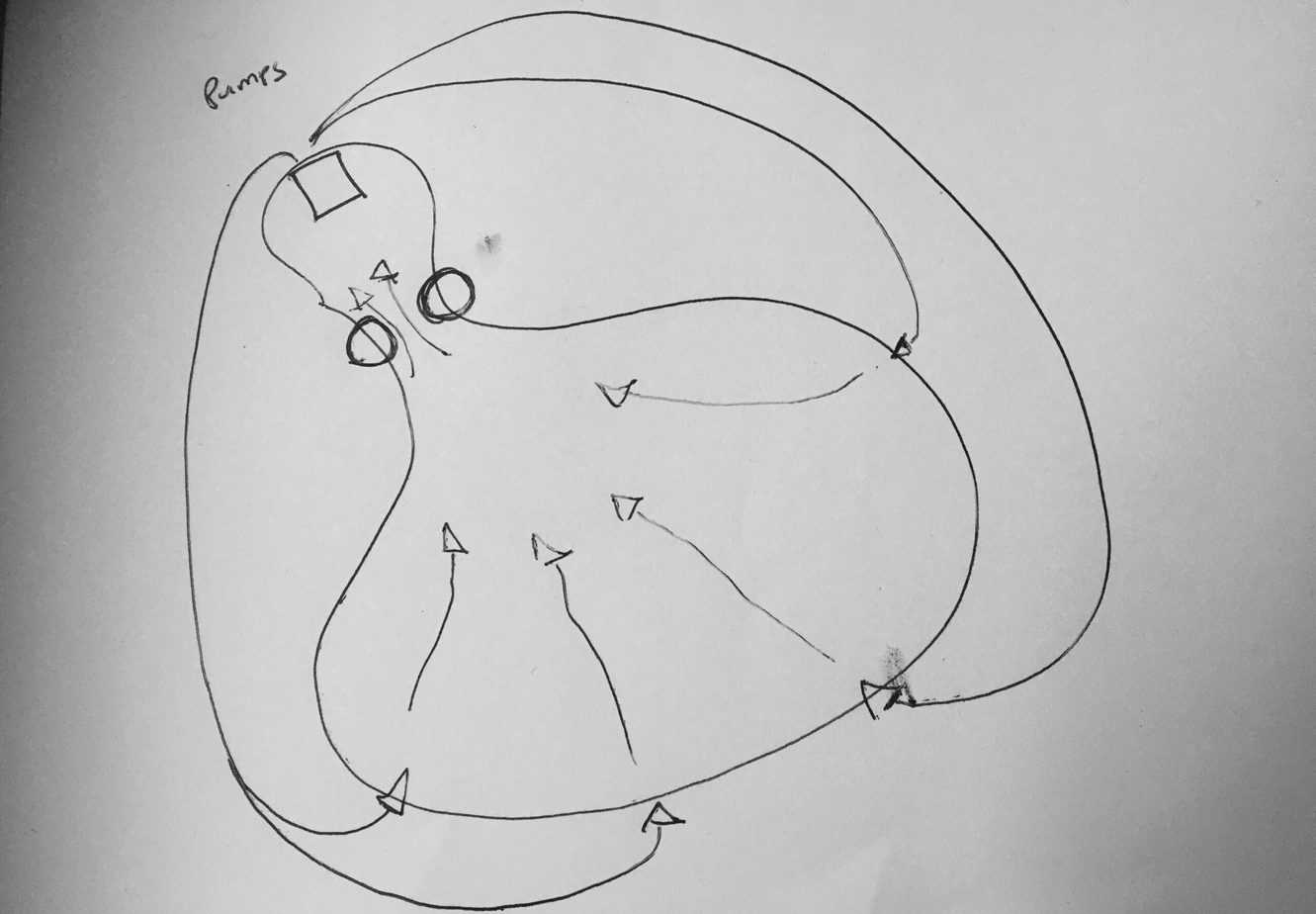
Create a complete filter
A skimmer is only one part of a pond filter. Creating a complete set up will keep your pond looking great all the time.
I like to add a bog filter to compliment the skimmer.
A skimmer is a mechanical filter. Basically it removes solid waste from the water.
A bog filter is a biological filter. It does the things you don’t see.
It keeps the water safe for fish, and helps keep algae problems at bay. Best of all a bog filter is completely natural and almost no maintenance.
If you would like to learn more about bog filtration and how to build a successful bog filter click the link to read an article I wrote.
Anyway I hope this article has helped you in some way.
You might like to join my email list where I offer discounts on pond related products and other pond money saving tips.
If so click on the button below.
Thanks for reading.

